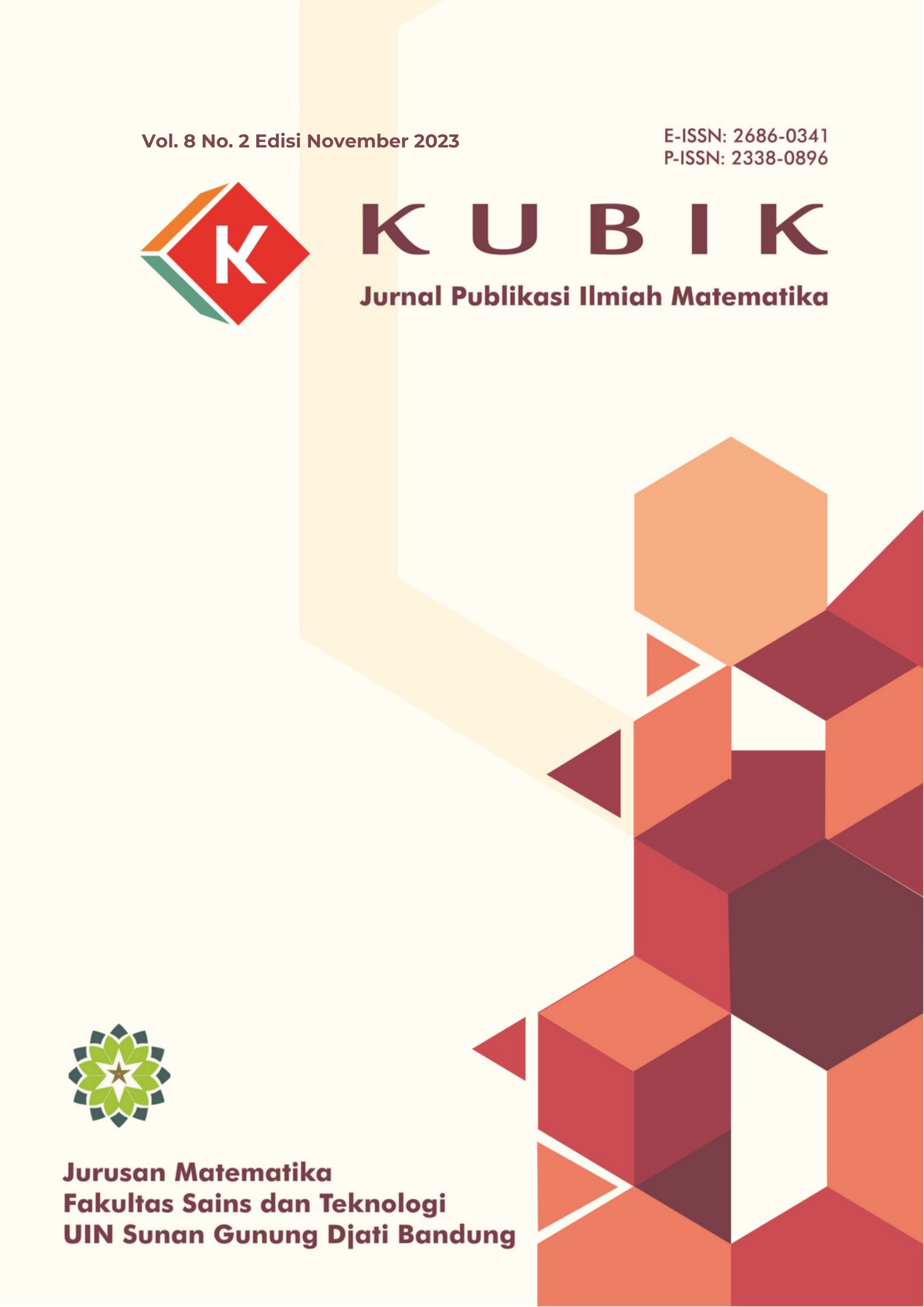Penyelesaian Masalah Transportasi dengan Degenerasi dan Siklus Berulang Menggunakan Minimum Demand Method dan Maximum Difference Extreme Difference Method
DOI:
https://doi.org/10.15575/kubik.v8i1.30024Keywords:
Degenerasi, Masalah Siklus Berulang, Masalah Transportasi, Maximum Difference Extreme Difference Method, Minimum Demand MethodAbstract
The transportation problem is a linear programming model that can be used to regulate distribution from a source (product supply) to a destination that requires the product optimally with minimum costs. However, when carring out optimality tests, sometimes the optimal value cannot be determined due to degeneration and repeated cycles. The aim of this research is to overcome the problem of degeneration and repeated cycles that occur in optimization problems. The methods used in this research are Minimum Demand Method (MDM) and Maximum Difference Extreme Difference Method (MDEDM) as well as the optimality test, namely Modified Distribution (MODI). The results of data analysis show that analysis show that the Minimum Demand Method has more degeneration problems, namely 132 data in the balanced case and 137 data in the unbalanced case. The Maximum Difference Extreme Difference Method has more repeated cycle problems, namely 8 data in the balanced case and 9 data in the unbalanced case. From the calculation results it can be concluded that the Maximum Difference Extreme Difference Method is more optimal than the Minimum Demand Method.
References
[1] W. L. Winston, Operations research: applications and algorithms. Cengage Learning, 2022.
[2] S. T. Darmawan Yudhanegara, Riset Operasi Manajemen Transportasi. Ahlimedia Book, 2021.
[3] A. Rangkuti, 7 Model Riset Operasi & Aplikasinya. Firstbox Media, 2019.
[4] J. J. Siang, “Riset Operasi dalam Pendekatan Algoritmis Edisi 2,†Penerbit Andi, Yogyakarta, 2014.
[5] P. Ramamurthy, Operations Research. Second Edition. 2007.
[6] M. Rohmah, E. R. Wulan, dan F. Ilahi, “Penentuan Rute Transportasi untuk Meminimalkan Biaya Menggunakan Metode Nearest Neighbor dan Nearest Insert (Studi Kasus dalam Pendistribusian Sandal di Tasikmalaya),†Kubik J. Publ. Ilm. Mat., vol. 4, no. 2, hal. 187–195, 2019.
[7] W. S. Raharjo dan E. R. Wulan, “Penggunaan Metode Maximum Supply With Minimum Cost untuk Mendapatkan Solusi Layak Awal Masalah Transportasi,†J. Kubik, vol. 2, no. 2, 2017.
[8] J. A. Ardistya, “Solusi Masalah Non Degenerasi Program Linier Trapezoidal Fuzzy Pada Home Industry ‘Rasimun Snack,†Universitas Diponegoro, 2020.
[9] S. Jamali, A. S. Soomro, dan M. M. Shaikh, “The Minimum Demand Method–A New and Efficient Initial Basic Feasible Solution Method for Transportation Problems,†J. Mech. Contin. Math. Sci., vol. 15, no. 19, hal. 94–109, 2020.
[10] R. R. Lekan, L. C. Kavi, dan N. A. Neudauer, “Maximum Difference Extreme Difference Method for Finding the Initial Basic Feasible Solution of Transportation Problems,†Appl. Appl. Math. An Int. J., vol. 16, no. 1, hal. 18, 2021.
[11] U. Ula, S. Khabibah, dan R. H. SU, “Penentuan Solusi Fisibel Awal Masalah Transportasi Dengan Minimum Demand Method,†in Pattimura Proceeding: Conference of Science and Technology, 2021, hal. 285–292.
[12] M. I. Fadillah, “Perbandingan Karagul Sahin Approximation Method (Ksam) Dan Minimum Demand Method (Mdm) Dalam Menentukan Solusi Fisibel Awal Masalah Transportasi,†UNDIP, 2023.
Downloads
Published
How to Cite
Issue
Section
Citation Check
License
Authors who publish in KUBIK: Jurnal Publikasi Ilmiah Matematika agree to the following terms:
- Authors retain copyright and grant the journal right of first publication with the work simultaneously licensed under a Attribution-ShareAlike 4.0 International (CC BY-SA 4.0) License that allows others to share the work with an acknowledgment of the work's authorship and initial publication in this journal.
- Authors are able to enter into separate, additional contractual arrangements for the non-exclusive distribution of the journal's published version of the work (e.g., post it to an institutional repository or publish it in a book), with an acknowledgment of its initial publication in this journal.
- Authors are permitted and encouraged to post their work online (e.g., in institutional repositories or on their website) prior to and during the submission process, as it can lead to productive exchanges, as well as earlier and greater citation of published work (See The Effect of Open Access).
Â









